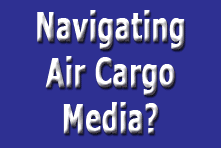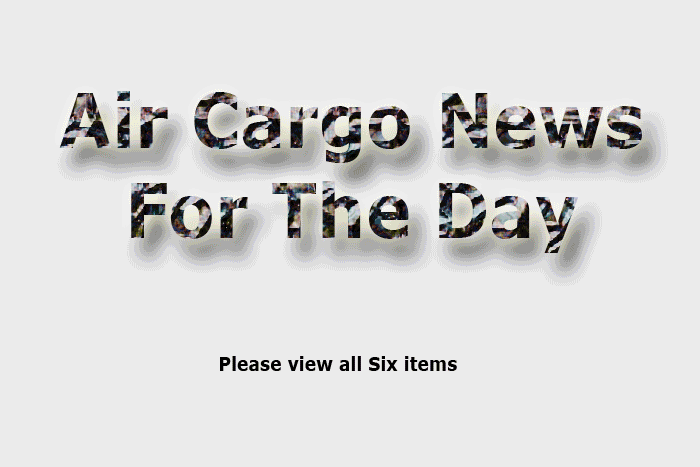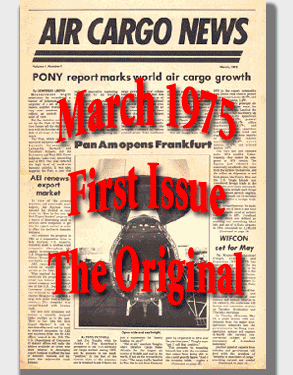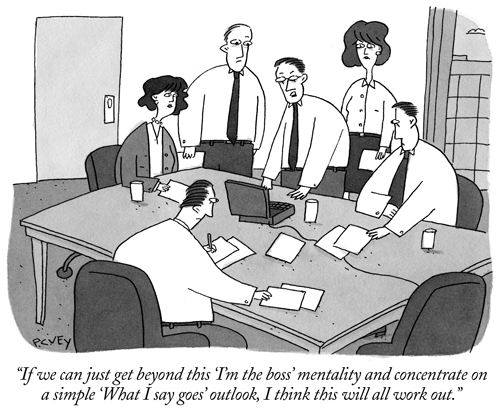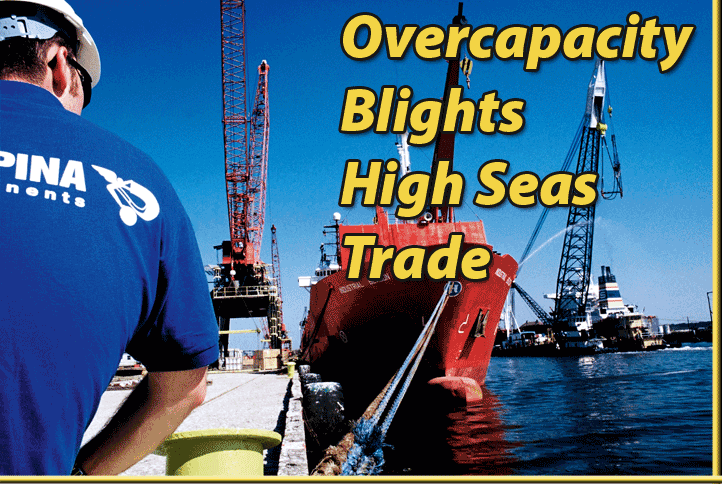
 vercapacity
was the main blight for shipping lines last year. But with a huge number
of ships due for delivery, there is likely to be little respite for
managers trying to boost utilization rates in 2014 unless lay-ups become
more fashionable or the various proposed super-alliances such as P3
between Maersk, MSC, and CMA-CGM lead to more efficient methods of managing
capacity. vercapacity
was the main blight for shipping lines last year. But with a huge number
of ships due for delivery, there is likely to be little respite for
managers trying to boost utilization rates in 2014 unless lay-ups become
more fashionable or the various proposed super-alliances such as P3
between Maersk, MSC, and CMA-CGM lead to more efficient methods of managing
capacity.
Rather, 2014 is likely to be more about cost control than service quality
for shipping lines, with some carriers racking up major losses and others
continuing the trend of 2013 by selling off disposable assets such as
port terminals in a bid to remain solvent.
 Frank
Hercksen, (left) global head of Ocean Freight at Swiss forwarder Panalpina,
anticipates shipping demand to increase by a “maximum of 3 to
4 percent per annum” through 2014. But this growth will be offset
by supply side expansion, which he expects to be aggressive. With the
order book currently running at over a fifth of the operational fleet,
he said supply growth would outstrip demand, forcing carriers to “focus
on cost per unit.” Frank
Hercksen, (left) global head of Ocean Freight at Swiss forwarder Panalpina,
anticipates shipping demand to increase by a “maximum of 3 to
4 percent per annum” through 2014. But this growth will be offset
by supply side expansion, which he expects to be aggressive. With the
order book currently running at over a fifth of the operational fleet,
he said supply growth would outstrip demand, forcing carriers to “focus
on cost per unit.”
 Peter
Orange, (right) GAC Regional Manager Freight Sales in the Asia Pacific
& Indian Subcontinent, said there are some indications of “green
shoots” in the liner market. However, he said any improvement
in demand would “be very slow and steady and certainly not a surge,
as consumers need to regain confidence, and in parts of the Eurozone
this will take time.” Peter
Orange, (right) GAC Regional Manager Freight Sales in the Asia Pacific
& Indian Subcontinent, said there are some indications of “green
shoots” in the liner market. However, he said any improvement
in demand would “be very slow and steady and certainly not a surge,
as consumers need to regain confidence, and in parts of the Eurozone
this will take time.”
He added: “The U.S. market is expected
to pick up earlier and the recent strength of the US Dollar is perhaps
an indicator of this. A lot of GAC’s growth for 2014 will be within
the Middle East and Intra-Asia trade, which have remained steady and
shown continued growth.”
The ups and downs of 2013 are likely to
prove as good a guide as any to the coming year.
In 2013, the downturn in cargo volumes
shipped from Asia to Northern Europe did finally come to an end in the
third quarter, with Drewry reporting that volumes had increased 6 percent
in the third quarter over the second. However, growth over the first
three quarters was just 1.5 percent and fourth quarter demand offered
little for those seeking crumbs of comfort.
Hercksen, like other analysts, points
out that in 2013 the traditional peak season—usually lasting from
late summer to early autumn—was not significant in either Europe
or the US. More of the same seems likely this year.
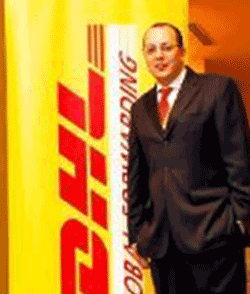 David
Goldberg, head of ocean freight in the Asia Pacific for DHL Global Forwarding,
said the fluctuating pattern of rates over 2013 was a reflection of
volume movements, with little in the way of a peak season evident in
the second half of the year. “The huge peak season of old times
has been gone for quite some years already,” he said. “While
we do see a few weeks of increased volumes in the traditional peak season
period, the buying patterns of major importers have very much flattened
over the past years.” David
Goldberg, head of ocean freight in the Asia Pacific for DHL Global Forwarding,
said the fluctuating pattern of rates over 2013 was a reflection of
volume movements, with little in the way of a peak season evident in
the second half of the year. “The huge peak season of old times
has been gone for quite some years already,” he said. “While
we do see a few weeks of increased volumes in the traditional peak season
period, the buying patterns of major importers have very much flattened
over the past years.”
Liner efforts to boost income by introducing
multiple General Rate Increases and Peak Season Surcharges are also
expected to continue in 2014. Last year, as the fleet expanded, to boost
spot rates lines used GRIs and PSSs, but with predictable regularity,
short-term gains were then rapidly eroded. The latest of these artificial
market hikes on Asia-Europe came on November 1 and December 15. Both
did little to bring stability to the market or liner returns.
Indeed, spot rates of around $1,500 per
TEU from Asia-North Europe at the end of the year were at almost exactly
the same level as in January 2013, with most of the year in between
showing steady slumps followed by brief GRI-induced rallies. Spots rates
from China to the US west coast were running at around the $1,800 per
FEU level at the end of 2013, down from over $2,500 per FEU at the start
of the year.
On that basis, spot rate stability will
remain an aspiration for shippers and more may turn to index-linked
or long-term contracts to remove some of the risk from ocean freight,
and to reduce the workload of managers.
Goldberg said this year should see further
marginal gains in ocean demand but no major change to overall market
balance. “Despite fairly optimistic news in the media, economic
improvement—while of course better than a few years ago—still
seems to be quite flat,” he said. “My personal view is 2014
will be a slight improvement over 2013, but pretty similar.
“I still fail to see the major catalysts
which would drive a large growth rebound in the market.”
So, expect more of the same over the next
12 months!
SkyKing
|




